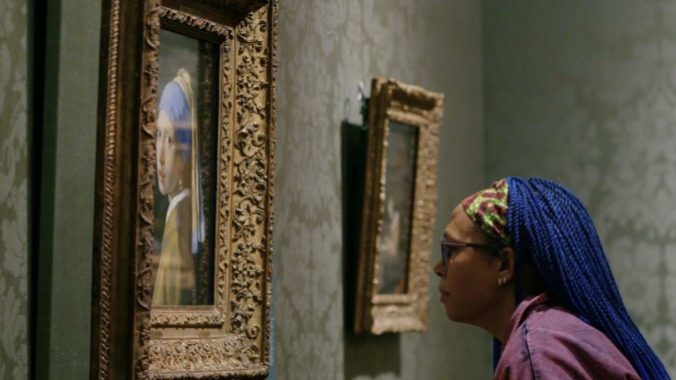Close to Vermeer Paints a Vivid, Behind-the-Scenes Portrait of Art-World Exhibitions

While Johannes Vermeer, the Dutch baroque master who painted some 30-odd works during his career, is generally considered an enigmatic figure in the art world, curators and experts have nonetheless dedicated their entire careers to evaluating his comparatively limited oeuvre. Thus, Gregor Weber, a highly-regarded expert on the artist, considers the “crown jewel” of his career to be overseeing the largest and most encompassing Vermeer exhibit ever at the Rijksmuseum in Amsterdam. The planning and execution of this Vermeer retrospective is the focus of Suzanne Raes’s documentary Close to Vermeer, which unfurls into an engrossing 79-minute exploration of the experts, museums and debates that continue to engage with the artist and his legacy.
Just a year away from retirement, Weber embarks on a quest to acquire as many Vermeer paintings as possible for the swiftly-approaching exhibit. Despite being a Dutch artistic icon, many of Vermeer’s works – including recognizable artworks The Milkmaid and The Art of Painting – are currently (and perhaps forever destined to be) part of permanent collections at foreign museums. As such, he and several Rijksmuseum colleagues, including fellow Vermeer historian Pieter Roelofs, attempt to secure loans of those paintings. They travel to The Frick and Metropolitan Museum of Art in New York City, Vienna’s Kunsthistorisches Museum, Germany’s Herzog Anton Ulrich Museum and even the neighboring Dutch Mauritshuis museum in The Hague. When able to secure pieces for the exhibit, researcher and conservator Anna Krekeler puts them under her microscope and relishes in the details of Vermeer’s brushwork up-close.
Though much of the doc’s beauty clearly stems from the gorgeous details inherent to the 17th century artist’s motifs, the overall momentum of the film is driven by art-world politics that typically don’t filter down into public consciousness. For example, a standoff of sorts develops when American researchers decide to disavow a work long considered to be an authentic Vermeer due to the predominance of a green hue in a subject’s flesh tone. Weber contests this finding – but is it due to genuine scholarly disagreement, or because he’s down to the wire in terms of making decisions for the Rijksmuseum exhibit?
-

-

-

-

-

-

-

-

-

-

-

-

-

-

-

-

-

-

-

-

-

-

-

-

-

-

-

-

-

-

-

-

-

-

-

-

-

-

-

-








































